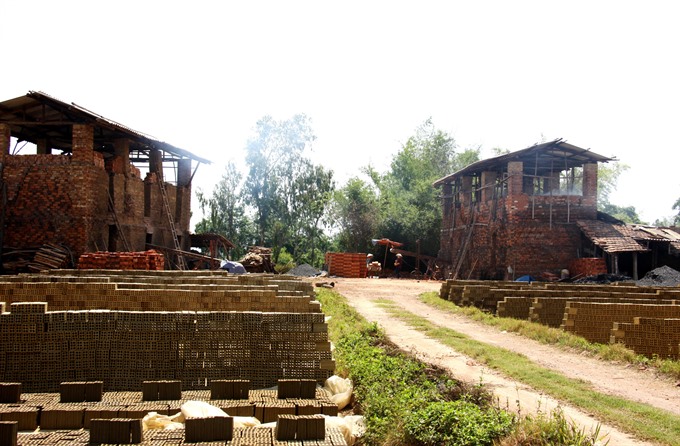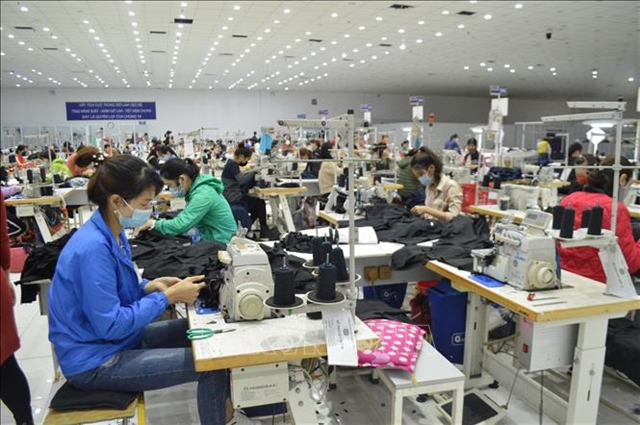.jpg) Society
Society

All of brick-kilns in residential quarters and brick-kilns using fossil materials in the southern province of Đồng Nai must close no later than the end of this year.
 |
| A handicraft brick kiln in Đồng Nai Province. — VNA/VNS Photo Vĩnh Trọng |
ĐỒNG NAI — Brick-kilns in residential quarters - and those using fossil fuel materials - in the southern province of Đồng Nai must close no later than the end of this year, chairman of the provincial People’s Committee Trần Văn Vĩnh announced in a conference in the province.
Deputy chairman Vĩnh asked district authorities to have detailed plans to close the brick-kilns causing pollution.
The province is currently home to two brick-kilns using fossil materials in Long Thành and Vĩnh Cửu districts.
The province has 140 brick-kilns not using fossil materials in Biên Hòa City and in Long Thành, Trảng Bom, Vĩnh Cửu and Xuân Lộc districts.
Most brick-kilns were built in 2000 and upgraded in 2009.
The average capacity of one brick-kiln is about 5-10 million bricks per year.
Most of handicraft brick-kilns use wood to burn the bricks. However, they still use tyres and scraps of fabric to make fire. More seriously, several brick-kilns even use tyres and scraps of fabric during the full burning period.
Võ Niệm Tường, director of the provincial Department of Environment Protection (check tên), said that owners of the brick-kilns committed to local authorities that they will avoid such materials, but in fact they still use serious pollutants.
Recently, when studying handicraft brick-kilns’ environmental impact, the provincial Department of Natural Resources and Environment discovered that only 60 out of 140 brick-kilns in the province were followed through on their commitment to protect the environment.
Biên Hòa City is the area with the most number of brick-kilns in the province. At the conference, leaders of the city proposed to lengthen the period to close the brick-kilns. Specifically, handicraft brick-kilns in An Hòa and Long Hưng communes should be allowed to operate until the end of next year, whereas handicraft brick-kilns should be allowed to work until 2020.
Nguyễn Thị Lan, owner of a brick-kiln in Biên Hòa City, said that every month her brick-kiln produces about 500,000 baked bricks.
“If the province asks us to close the brick-kiln by the end of this year, we will follow, but we hope that province authorities will form supportive policies so that my enterprise can transition toward producing non baked bricks,” she said.
Earlier in 2015, when the southern province of Bình Dương closed handicraft brick-kilns, brick prices soared immediately from VNĐ700 (US$0.03) per brick to VNĐ1,000 ($0.04). Many brick-kilns in the province did not have enough bricks to meet real demand.
The Đồng Nai Department of Construction said that the province uses 1.3 billion bricks annually, but it produces only 130 million non-baked bricks per year. Thus, to meet real demand of non-baked bricks, the province must set up about 60 production lines, each line with a capacity of 16-17 million bricks per year.
Vũ Văn Dũng, director of the Nam Kiến Co Ltd in Biên Hòa City, said that in the long term, brick-kilns should change to produce non-baked bricks to reduce environmental pollution, but a proper way to change should be considered carefully to prevent a “shock” in the brick market.
Enterprises that produce non-baked bricks should openly share instruction so that local residents can learn the correct techniques. — VNS



.jpg)
